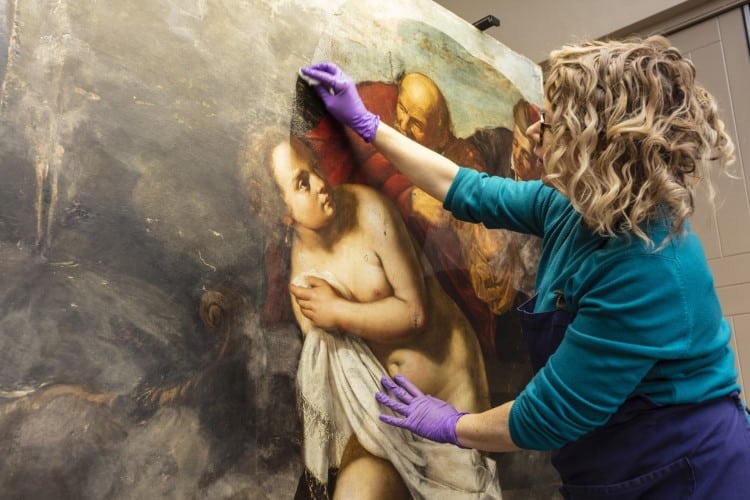
Conservator Adelaide Izat working on “Susanna and the Elders.” (Photo: Royal Collection Trust / © His Majesty King Charles III 2023)
Italian artist Artemisia Gentileschi was one of the most celebrated painters of the Baroque period. So much so that she even painted for royalty, including a stint in London at the court of King Charles I. So how did one of her canvases end up in storage at Hampton Court for over 100 years, only to be recently rediscovered? It all goes back to the whims of history.
Gentileschi rose to prominence in the 17th century, when very few women were painters. Her father, Orazio Gentileschi, was a well-known artist and follower of Caravaggio, which gave Gentileschi the opportunity to train. Her art was bold, and she often painted Biblical scenes with strong women at the forefront, such as Judith and Holofernes and Susanna and the Elders.
In her compositions, women were not passive victims, but active participants in the action. Gentileschi’s personal life has long clouded historians’ interpretations of her work—a fellow artist raped her, and there was a well-documented trial. But her work stands on its own artistic merit, and she was recognized for her talents not only as one of the great female artists but as a great artist regardless of gender.
Gentileschi arrived at King Charles I’s court in 1638, most likely to assist her elderly father, who was the court painter. While there, Queen Henrietta Maria took a liking to her work and commissioned a painting from her. That piece, one of several versions of Susanna and the Elders that she created, originally hung over the queen’s fireplace at Whitehall Palace. It was one of seven paintings by the artist in the royal collection, though only her well-known Self-Portrait, remained after Charles I was executed.
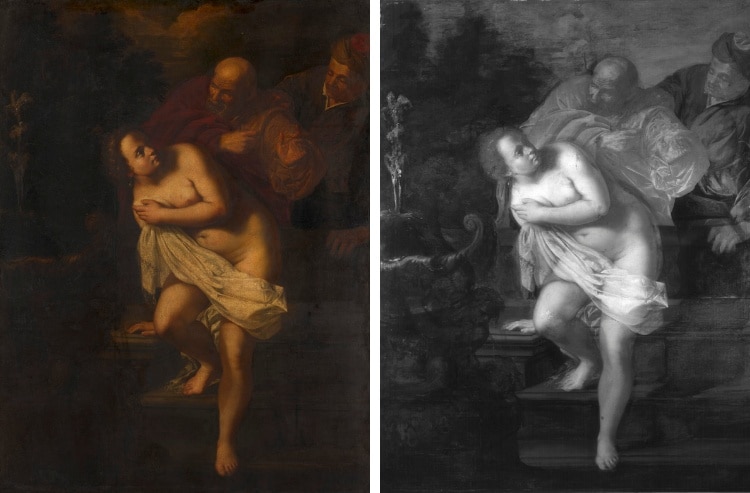
“Susanna and the Elders” prior to conservation (left) and using infrared reflectography (right). (Photos: Royal Collection Trust / © His Majesty King Charles III 2023)
However, it seems that Susanna and the Elders made its way back to England after the Stuart Restoration when Charles II was allowed back from exile. But in the 18th century, Gentileschi’s art fell out of favor and by 1819 it was relegated to leaning against a wall in the queen’s chamber, seemingly unworthy of being hung. In fact, at that point, it appears that Gentileschi’s name was no longer attached to the work. It then lost its frame and was shipped off to storage for being in poor condition.
During a recent inventory by the Royal Collection Trust, the painting, simply listed as by the “French School,” was given a second life. Curators began examining the piece, which appeared to resemble the description of a Susanna and the Elders that was once recorded as part of the collection. They then used X-radiography and infrared reflectology to look beyond the grit and grime to see Gentileschi’s spectacular artwork. At this point, it was up to conservators to bring the painting back to life.
“When it came into the studio, Susanna was the most heavily overpainted canvas I had ever seen, its surface almost completely obscured,” shared paintings conservator Adelaide Izat. “It has been incredible to be involved in returning the painting to its rightful place in the Royal Collection, allowing viewers to appreciate Artemisia’s artistry again for the first time in centuries.”
The rediscovery is a victory for art historians, who will now be able to add this Susanna and the Elders to six other versions of the story also painted by the artist. And it certainly makes you wonder what other treasures could be hiding away in royal storage.
Now, the restored painting is temporarily on display at Windsor Castle alongside Gentileschi’s self-portrait and a painting by her father. A look at the display is included on a visit to Windsor Castle until April 29, 2024.
The Royal Collection Trust has restored an Artemisia Gentileschi painting that was in storage for 100 years.
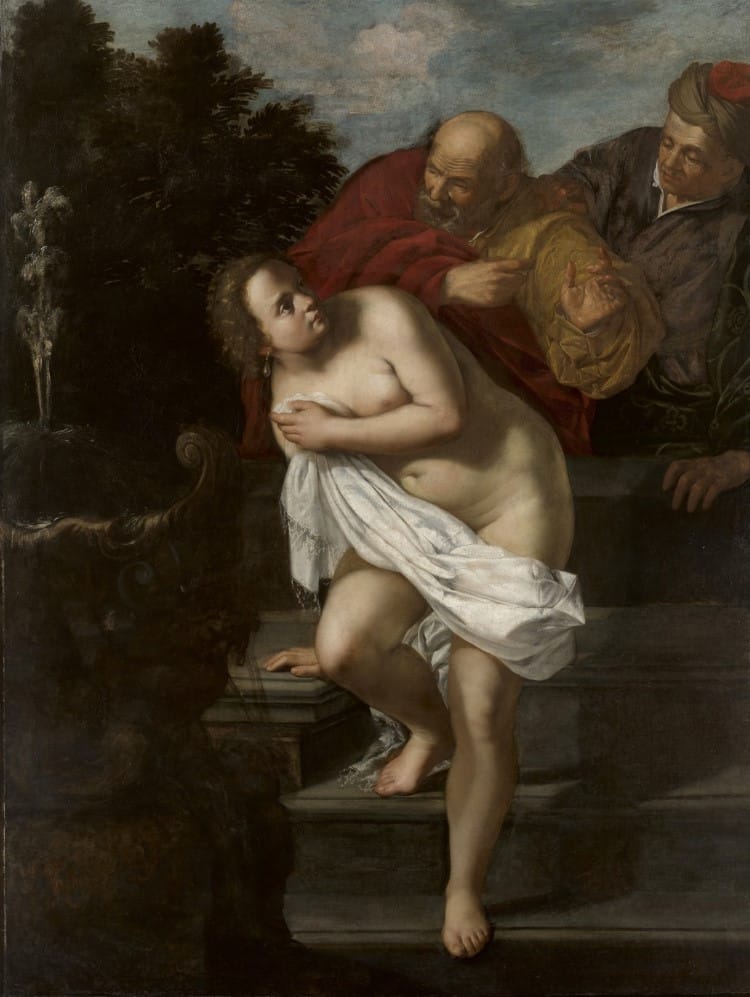
Artemisia Gentileschi, “Susanna and the Elders,” c.1638–9. (Photo: Royal Collection Trust / © His Majesty King Charles III 2023)
It was one of seven paintings in the collection of King Charles I, which includes Gentileschi’s famous self-portrait.

Artemisia Gentileschi, “Self-portrait as the Allegory of Painting,” c.1638–39. (Photo: Royal Collection Trust / © His Majesty King Charles III 2023)
By the 19th century, Gentileschi’s art fell out of favor, and the painting was relegated to laying against a wall in the queen’s bed-chamber.
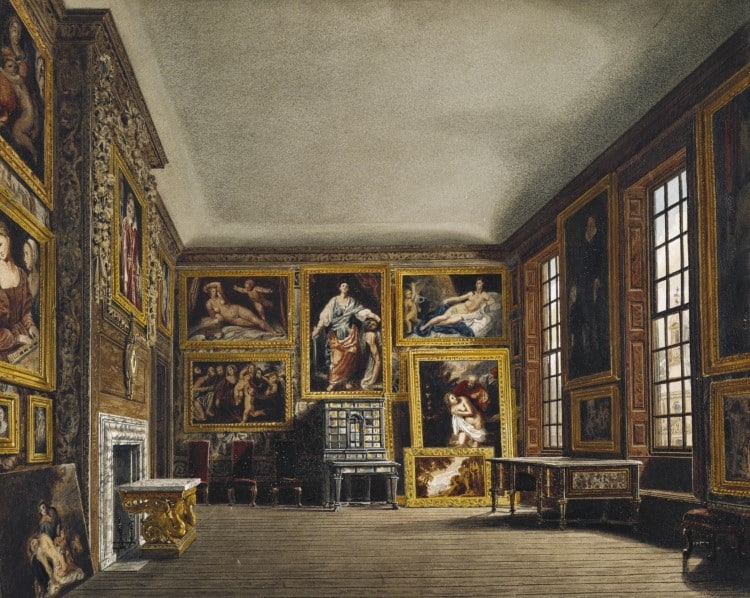
Richard Cattermole, “The Queen’s Bedchamber,” Kensington Palace, c.1818. (Photo: Royal Collection Trust / © His Majesty King Charles III 2023)
However, during a recent inventory at Hampton Court, art historians realized that a dark painting attributed to the “French School” was actually by the famous Baroque artist.
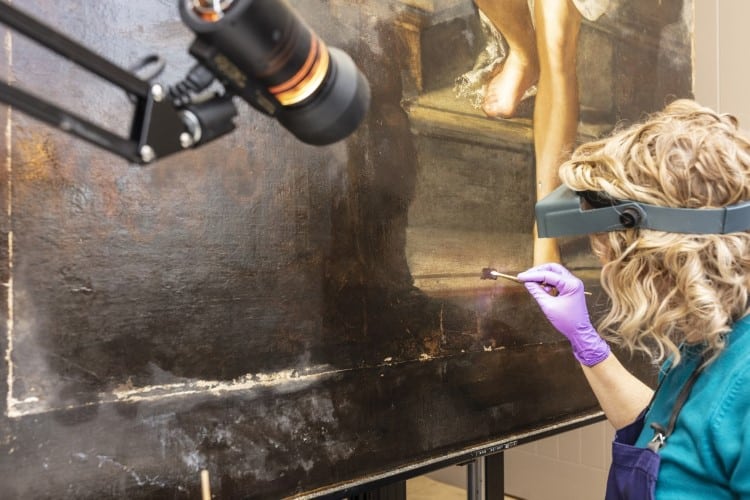
Conservator Adelaide Izat working on “Susanna and the Elders.” (Photo: Royal Collection Trust / © His Majesty King Charles III 2023)
After extensive conservation work, the painting was brought back to its original glory.
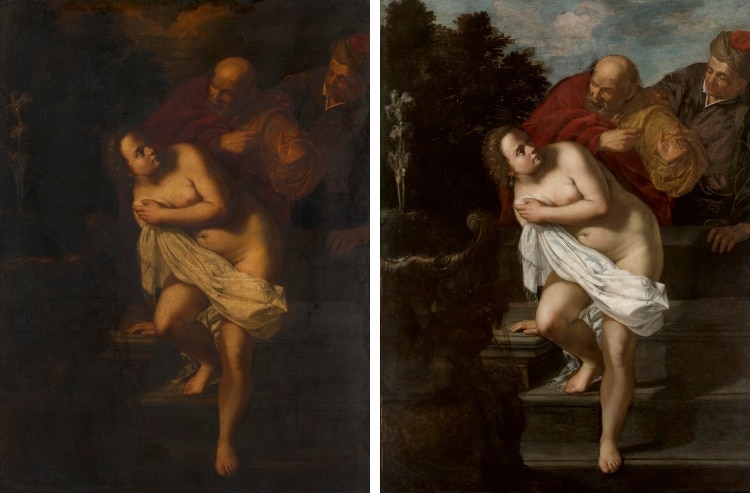
Artemisia Gentileschi, “Susanna and the Elders,” c.1638–9, before and after the completion of extensive conservation treatment. (Photos: Royal Collection Trust / © His Majesty King Charles III 2023)
The painting is now on view at Windsor Castle until April 29, 2024.

(Photo: Royal Collection Trust / © His Majesty King Charles III 2023)
Related Articles:
Cézanne Self-Portrait Hidden Under a Still Life Is Discovered After Almost 160 Years
Vermeer Painting Restoration Reveals a Portrait of Cupid Hidden for Over 350 Years
Family Discovers Their TV Room Painting Is a Renaissance Masterpiece Worth $845K
Stolen Van Gogh Painting Is Returned to Museums in the Netherlands After Three Years
